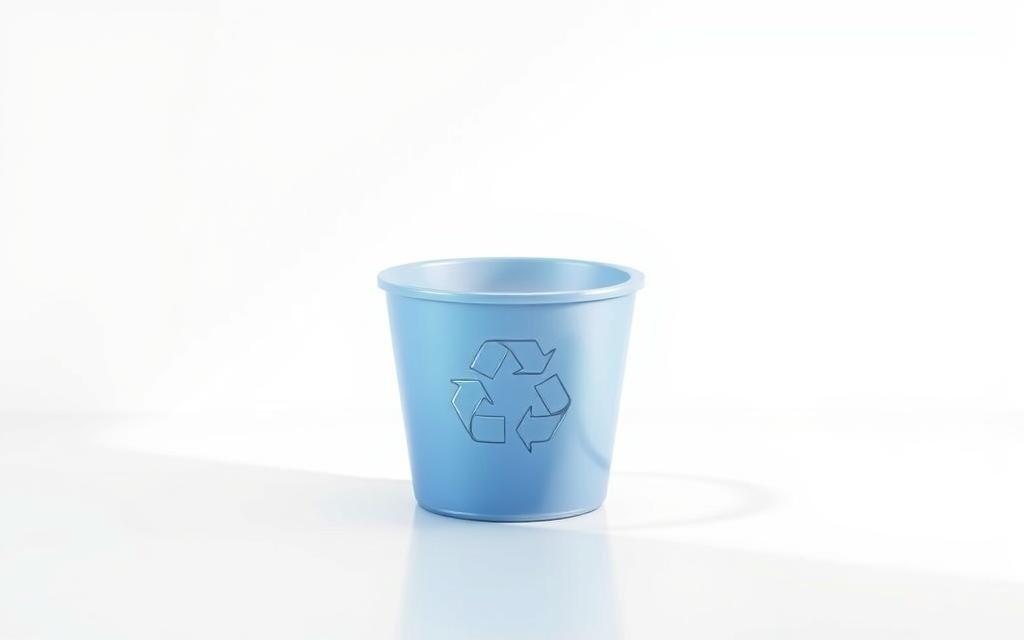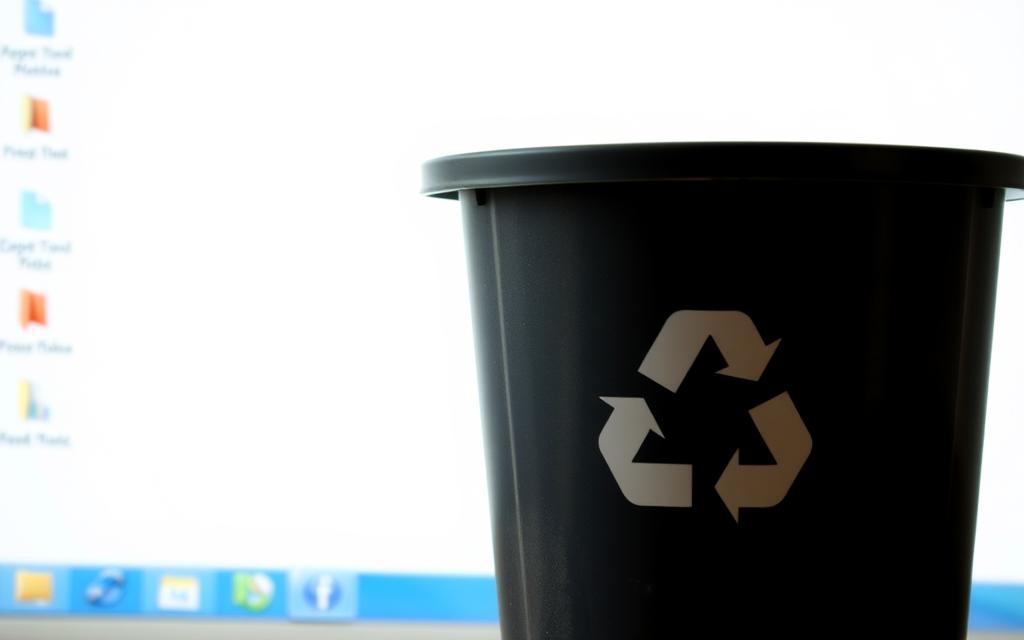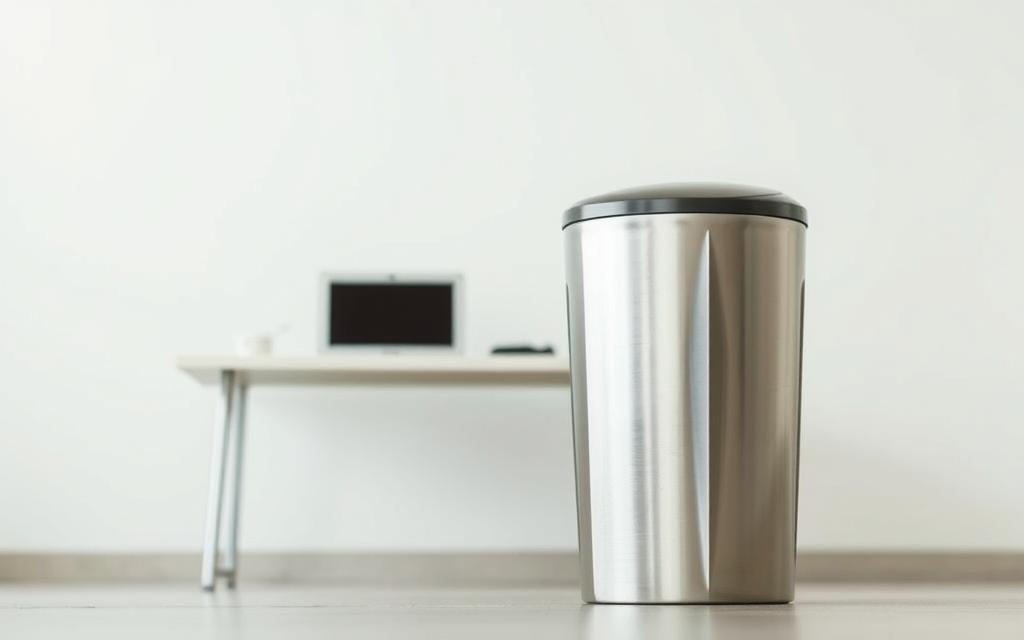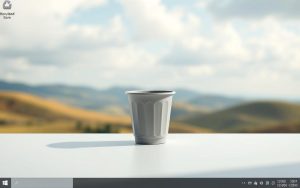Table of Contents
Over time, your computer can accumulate unnecessary files, taking up valuable storage space. These files often end up in the recycle bin, where they remain until you decide to remove them permanently. Regularly clearing this area can help keep your system running smoothly.
When you delete files, they aren’t immediately erased. Instead, they are stored temporarily, giving you a chance to recover them if needed. This feature is particularly useful if you accidentally remove something important.
By maintaining an organized recycle bin, you can free up space and improve your computer’s performance. It’s a simple yet effective way to ensure your system stays efficient and clutter-free.
Introduction to Emptying the Recycle Bin
The Recycle Bin acts as a safety net for deleted files, ensuring they aren’t permanently lost right away. When you remove items from your computer, they are stored here temporarily. This allows you to recover them if needed, providing a layer of protection against accidental deletions.
Files remain recoverable until the Recycle Bin is emptied. The system only marks the space as available for new data at that point. This feature is particularly useful if you realize you’ve deleted something important.
In multi-drive configurations, each drive maintains its own Recycle Bin. This means files deleted from one drive won’t appear in another’s. It’s a helpful way to keep your storage organized across different partitions.
Hidden system files like $Recycle.Bin require special permissions to modify. These files are part of the system’s structure and should be handled with care. Deleting them improperly can cause issues with your computer’s functionality.
Once the Recycle Bin is emptied, the files are permanently deleted. Without backups or recovery methods, this data is lost for good. It’s a good idea to double-check before proceeding.
Clearing the Recycle Bin reclaims storage space, which is beneficial for both SSDs and HDDs. Regularly emptying it can help maintain your computer’s performance and efficiency. For more on recovering files after emptying, visit this guide.
Step-by-Step Guide: How to Empty Recycle Bin on Windows
Managing your computer’s storage efficiently starts with clearing unnecessary items. The Recycle Bin holds deleted files and folders temporarily, allowing you to recover them if needed. However, to free up space, you’ll need to remove these items permanently.

Step 1: Locate the Recycle Bin Icon
Start by finding the Recycle Bin icon on your desktop. If it’s missing, you can restore it through the default settings. Right-click on the desktop, select Personalize, and choose Themes to adjust desktop icons.
Step 2: Right-Click and Select “Empty Recycle Bin”
Once you’ve located the icon, right-click on it. A context menu will appear with several options. Select Empty Recycle Bin to initiate the process. This action prepares your system to permanently delete the stored files.
Step 3: Confirm the Action
A confirmation dialog will appear to ensure you want to proceed. Click Yes to confirm. In some cases, multiple prompts may appear, especially if the Recycle Bin contains a large number of files or folders.
If you accidentally delete something important, restore it before confirming. This feature is particularly useful for users who frequently manage large amounts of data.
- Check for missing icons in the desktop settings.
- Always double-check before confirming the deletion.
- Understand the difference between system-wide and per-user configurations.
Alternative Methods to Empty the Recycle Bin
There are multiple ways to manage and remove temporary files effectively. Beyond the standard desktop icon, advanced tools and techniques can help streamline the process. These methods are particularly useful for users who prefer more control or need to handle system-protected folders.
Using File Explorer
File Explorer provides a straightforward way to manage deleted items. Navigate to the Recycle Bin folder within the navigation pane. Right-click and select Empty Recycle Bin from the context menu. This method is ideal for users who prefer a graphical interface.
For more advanced options, use the Manage tab in File Explorer. This tool allows you to view and delete specific files or folders individually. It’s a great way to ensure only unnecessary items are removed.
Using Command Prompt
For those comfortable with command-line tools, the Command Prompt offers a faster approach. Open the prompt with administrative privileges and enter the command del /s /q followed by the drive path. This method bypasses the graphical interface, making it efficient for bulk deletions.
Always exercise caution when using Command Prompt. Ensure you’re targeting the correct folder to avoid accidental data loss. Administrative privileges are required to handle system-protected areas like $Recycle.Bin.
Both methods have their advantages. Graphical interfaces are user-friendly, while command-line tools offer speed and precision. Additionally, third-party programs can automate the process, providing a hassle-free alternative for regular maintenance.
Clearing Recycle Bin for Specific Drives
Each drive on your computer has its own storage for deleted items. In multi-drive systems, the Recycle Bin operates independently for each partition. This means files deleted from one drive won’t affect another’s contents.

To clean up a specific drive, open File Explorer and navigate to the Recycle Bin folder. Right-click and select Empty Recycle Bin for that location. This method ensures only the targeted data is removed, preserving space on other drives.
File systems like NTFS and FAT32 handle deletions differently. NTFS supports larger file sizes and advanced permissions, while FAT32 is simpler but less efficient. Understanding these differences helps you manage storage more effectively.
For network drives or external devices, the process remains similar. However, ensure the device is connected before attempting cleanup. Viewing storage allocation per drive can help identify which ones need attention.
To access protected OS files, modify Folder Options. Enable the Show hidden files, folders, and drives setting. This allows you to view system folders like $Recycle.Bin. Be cautious when modifying these areas to avoid unintended data loss.
Regularly clearing the Recycle Bin for specific drives is a practical way to maintain your system’s efficiency. Always double-check before deleting to ensure important files aren’t lost permanently.
Automating the Process with PowerShell
PowerShell offers a powerful way to automate system tasks, including managing temporary files. The Clear-RecycleBin cmdlet is a versatile tool for permanently removing contents from the Recycle Bin. This method is ideal for users who prefer automation over manual processes.

The basic syntax for the Clear-RecycleBin command includes several parameters. For example, Clear-RecycleBin -Confirm prompts the user before deleting files. This ensures you don’t accidentally remove important data.
To target a specific drive, use the -DriveLetter parameter. For instance, Clear-RecycleBin -DriveLetter C: clears the Recycle Bin for the C: drive. This is useful for managing multiple drives efficiently.
For silent operations, the -Force parameter bypasses confirmation prompts. This is particularly helpful when running automated scripts. However, exercise caution to avoid unintended deletions.
- Use
-WhatIfto preview changes without executing the command. - Schedule cleanup tasks with Windows Task Scheduler for regular maintenance.
- Create batch files using
powershell.exe -Command "Clear-RecycleBin -Force".
Security is crucial when automating tasks. Ensure scripts run with appropriate permissions and double-check the Recycle Bin’s contents before execution. For a detailed guide on using PowerShell, visit this resource.
PowerShell’s flexibility makes it superior to traditional Command Prompt. It’s compatible with PowerShell 7 and later versions, ensuring cross-version functionality. Automating the Recycle Bin cleanup process saves time and keeps your system efficient.
Conclusion
Keeping your system optimized requires regular maintenance of temporary files. From basic desktop methods to advanced PowerShell commands, there are multiple ways to manage your storage effectively. Regularly clearing unnecessary items ensures your computer runs smoothly and frees up valuable space.
Always double-check before permanently deleting data, as recovery becomes impossible without backups. Implementing a maintenance schedule helps prevent clutter and improves performance. For enterprise environments, consider automated scripts to streamline the process.
If issues arise, troubleshoot by verifying settings or using recovery tools like iBoysoft Data Recovery. Proper storage management not only enhances efficiency but also safeguards important files from accidental loss.
FAQ
What happens when I clear the Recycle Bin?
When you clear the Recycle Bin, all the files stored in it are permanently deleted from your system. This action frees up storage space on your computer.
Can I recover files after emptying the Recycle Bin?
Once the Recycle Bin is emptied, files are no longer accessible through standard methods. However, specialized data recovery software may help retrieve deleted files, depending on the situation.
Is it possible to empty the Recycle Bin for a specific drive?
Yes, you can empty the Recycle Bin for individual drives. Open the Recycle Bin properties, select the drive, and choose the option to delete its contents separately.
How can I automate the process of emptying the Recycle Bin?
You can use PowerShell scripts or third-party programs to automate the process. These tools allow you to schedule regular cleanups without manual intervention.
What is the default storage limit for the Recycle Bin?
The default storage limit varies based on your system’s drive size. You can adjust this limit by accessing the Recycle Bin properties and modifying the allocated space.
Can I bypass the Recycle Bin when deleting files?
Yes, you can bypass the Recycle Bin by using the Shift + Delete shortcut. This method permanently deletes files without sending them to the Recycle Bin.









